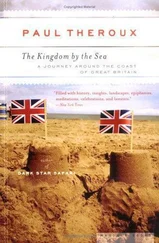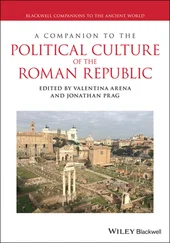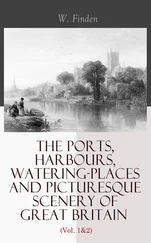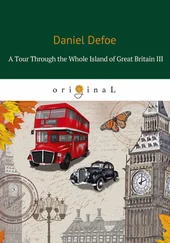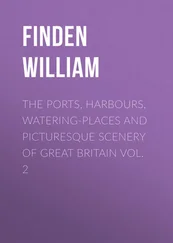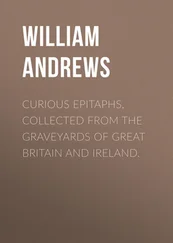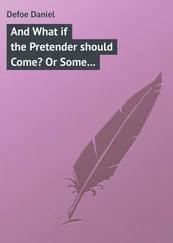Любовь Ласица - Great Britain - geography, politics, culture
Здесь есть возможность читать онлайн «Любовь Ласица - Great Britain - geography, politics, culture» — ознакомительный отрывок электронной книги совершенно бесплатно, а после прочтения отрывка купить полную версию. В некоторых случаях можно слушать аудио, скачать через торрент в формате fb2 и присутствует краткое содержание. Год выпуска: 2013, Жанр: foreign_language, foreign_language, Детская образовательная литература, на английском языке. Описание произведения, (предисловие) а так же отзывы посетителей доступны на портале библиотеки ЛибКат.
- Название:Great Britain: geography, politics, culture
- Автор:
- Жанр:
- Год:2013
- ISBN:нет данных
- Рейтинг книги:5 / 5. Голосов: 1
-
Избранное:Добавить в избранное
- Отзывы:
-
Ваша оценка:
- 100
- 1
- 2
- 3
- 4
- 5
Great Britain: geography, politics, culture: краткое содержание, описание и аннотация
Предлагаем к чтению аннотацию, описание, краткое содержание или предисловие (зависит от того, что написал сам автор книги «Great Britain: geography, politics, culture»). Если вы не нашли необходимую информацию о книге — напишите в комментариях, мы постараемся отыскать её.
Great Britain: geography, politics, culture — читать онлайн ознакомительный отрывок
Ниже представлен текст книги, разбитый по страницам. Система сохранения места последней прочитанной страницы, позволяет с удобством читать онлайн бесплатно книгу «Great Britain: geography, politics, culture», без необходимости каждый раз заново искать на чём Вы остановились. Поставьте закладку, и сможете в любой момент перейти на страницу, на которой закончили чтение.
Интервал:
Закладка:
In 1800 the United Kingdom of Great Britain and Ireland became a single state when the Irish Parliament was joined with the Parliament for England, Scotland, and Wales in Westminster. However, in 1922, most of Ireland became a separate state.
Today these differences have not completely disappeared. People of 4 nations feel their identity very strongly. It is safest to use Britain when you talk about where they live and British as the adjective to describe their nationality.
The signs of national identityof people who live in four countries of the UK are the following (see table 2).
Characteristic names(both surnames and first names). The prefix ‘Mac’ or ‘Mc’ in surnames (such as McCall, MacCarthy, MacDonald) is always either Scottish or Irish. The prefix ‘O’ (as in O’Brien, O’Hara) is distinctly Irish. The prefix ‘P’ can be found in many Welsh surnames (Prichard). A very large number of surnames (for example, Davis, Evans, Jones, Lloyd, Morgan, Price, Rees, Williams) suggest Welsh origin. The most common surname in both England and Scotland is actually ‘Smith’. The prefix ‘Mac’ means ‘son of’ and people with this name usually feel they belong to the same family or clan. ‘O’ means ‘the family of’. The Prefix ‘P’ comes from the Welsh word ‘ар (or ab)’, which also means ‘son of’. Thus for example a Welsh surname Prichard is the same as English Richardson (the son of Richard).
First names can also be indicative. The Scottish form of ‘John’ is ‘Ian’ and its Irish form is ‘Sean’ (although all three names are common throughout Britain).
There are also nicknames for Scottish, Irish and Welsh men. For example, you can address a Scottish friend as ‘Jock’, whatever his first name is. Irishmen are called ‘Paddy’ or ‘Mick’ and Welshmen are known as ‘Dai’ or ‘Taffy’. If the person is not a friend the nickname can sound rather insulting.
National dress.Perhaps the most famous national costume in Britain is the Scottish kilt with its distinctive tartan pattern. The kilt is a woolen skirt with a lot of vertical pleats. The kilt is worn around the waist, with the pleats at the back and the ends crossed over at the front and secured with a pin. Each Scottish Clan or family has its own distinctive tartan pattern, made up of different colours.
Sometimes tartan trousers or trews are worn instead of a kilt.
Women do not have their own distinctive national dress in Scotland, although tartan fabrics are widely used in clothing, and the kilt is also worn by women.
Although England is a country rich in folklore and traditions, it has no definite ‘national’ costume. The most well-known folk costumes are those of the Morris dancers. During the summer months people can see them in many country villages performing folk dances that once held ritualistic and magical meanings associated with the awakening of the earth.
The costume varies from team to team, but basically consists of white trousers, a white shirt, a pad of bells worn around the calf of the leg, and a hat made of felt or straw, decorated with ribbons and flowers. The bells and ribbons are said to banish harm and bring fertility.
Welsh National dress is not as famous as Scottish National dress. Still they do have a National women’s costume, in fact there isn’t really a National costume for men although recently a tartan has been created and tartan trousers or kilts are often worn.
The Welsh National Costume for women was designed by an influential lady, Lady Llanover, who lived in Gwent South Wales.
The Welsh costume consists of a tall hat, a long frilled white cap worn under the hat, a white blouse, a red flannel shawl, a long skirt made of wool with a black and white chequered pattern, a starched white apron sometimes edged with lace, black woolen stockings, and black shoes.
Early Irish dress, based on Gaelic and Norse costumes, consisted of trews for men, worn with a fringed cloak, or a short tunic for both men and women, worn with a fringed cloak. Saffron yellow is an important feature of Irish costume. This style of dressing was prohibited in the 16th century to suppress the distinctive Irish dress and so overcome Irish reluctance to become part of England. A strong tradition of wearing this folk costume is not observed in Northern Ireland today.
The traditional Irish costume is now associated with the bright flamboyant costumes worn by traditional Irish dancers.
N ational character.There are certain stereotypes of national character which are well-known in different countries.
British people are considered to be reserved, polite, well-bred and they love privacy. People of each country (England, Wales, Scotland, Northern Ireland) have their own characteristic features that make them different from each other.
The English are said to be cold, polite, quiet, but possessing a great sense of humour, a special ‘English type’ of humour, often difficult to understand for foreigners. The English are known to be very conservative in their political and social views.
The Scots have a reputation for being careful with money; they are more selfconscious about their nationality than the Englishmen. The Welsh are highly-gifted in the art of poetry and drama. They speak fluently and confidently. The Welsh are a nation оf singers. The Irish are supposed to be great talkers.
National musical instruments.The harp is a musical instrument of both Ireland and Wales. The bagpipes are regarded as distinctively Scottish (though a smaller type is also used in traditional Irish music). The Northumbrian small pipes are considered to be English.
The four nations who live in the UK differ from each other, perhaps that is why when they are asked who they are they are proud to answer – at first they are the English (or the Welsh, or Scotsmen or the Irish) and only then they are the British or the citizens of the UK.
1.5 National symbols of the UK and four countries (the national flag; the Coats of Arms, the national anthem, national holidays and national emblems)
Flagis a visiting card of any country, which symbolizes its sovereignty and reflects its history. In the 14-th century the first national flag was St George’s cross – a red cross on a white background, as St George is a patron saint of England.
The 17 thcentury was time when relations between England and Scotland changed. These two countries were united by Jacob Stuart in 1603. The national symbols had to be changed. It was necessary to combine two crosses: a red cross on a white background of St George’s flag and a white cross on a blue background (St Andrew’s cross – flag of Scotland). This new flag was created and became national in 1606 and was called ‘Union Jack’.
On the 1 stof January in 1801 the union of England and Ireland was claimed. It was necessary to make changes in the National flag and Emblem. This time the flag got new red diagonal lines from St Patrick’s cross. Since 1801 the flag wasn’t changed and it’s possible to see it on the flags of former British colonies.
So the national flag of the UK is The Union Jack. It is the combination of the cross of St. George, of St. Andrew, of St. Patrick.
The origin of the term ‘Union Jack’ is uncertain. It may come from the name of Jacob Stuart (James I) who originated the first union in 1603. Jack is a short name of Jacob. Another alternative is that the name may be derived from a jack, a small flag at the bowsprit flown only by ships of the Royal Navy during the reign of Charles II (1660 – 1685); the term ‘jack’ once meant small.
The Welsh dragon does not appear on the flag because when the first Union Flag was created in 1606, Wales was already united with England from the 13th century. Wales was a Principality instead of a Kingdom.
Читать дальшеИнтервал:
Закладка:
Похожие книги на «Great Britain: geography, politics, culture»
Представляем Вашему вниманию похожие книги на «Great Britain: geography, politics, culture» списком для выбора. Мы отобрали схожую по названию и смыслу литературу в надежде предоставить читателям больше вариантов отыскать новые, интересные, ещё непрочитанные произведения.
Обсуждение, отзывы о книге «Great Britain: geography, politics, culture» и просто собственные мнения читателей. Оставьте ваши комментарии, напишите, что Вы думаете о произведении, его смысле или главных героях. Укажите что конкретно понравилось, а что нет, и почему Вы так считаете.

